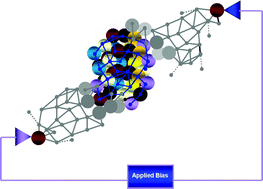Human olfactory receptor 17-40 as an active part of a nanobiosensor: a microscopic investigation of its electrical properties
Abstract
Increasing attention has recently been devoted to

* Corresponding authors
a
Dipartimento di Ingegneria dell'Innovazione, Università del Salento, Lecce, Italy, EU, & CNISM - Consorzio Nazionale Interuniversitario per le Scienze Fisiche della Materia, Roma, Italy, EU
E-mail:
eleonora.alfinito@unisalento.it
b University of Lyon, Laboratory of Analytical Chemistry, Claude Bernard University, 43 Boulevard 11 Novembre 1918, 69622 Villeurbanne Cedex, France, EU
Increasing attention has recently been devoted to

 Please wait while we load your content...
Something went wrong. Try again?
Please wait while we load your content...
Something went wrong. Try again?
E. Alfinito, J. Millithaler, L. Reggiani, N. Zine and N. Jaffrezic-Renault, RSC Adv., 2011, 1, 123 DOI: 10.1039/C1RA00025J
To request permission to reproduce material from this article, please go to the Copyright Clearance Center request page.
If you are an author contributing to an RSC publication, you do not need to request permission provided correct acknowledgement is given.
If you are the author of this article, you do not need to request permission to reproduce figures and diagrams provided correct acknowledgement is given. If you want to reproduce the whole article in a third-party publication (excluding your thesis/dissertation for which permission is not required) please go to the Copyright Clearance Center request page.
Read more about how to correctly acknowledge RSC content.
 Fetching data from CrossRef.
Fetching data from CrossRef.
This may take some time to load.
Loading related content
